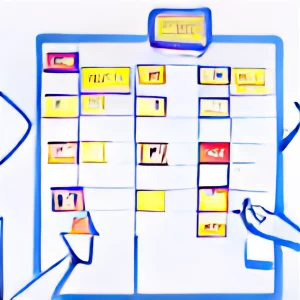Previously on ‘Failing Since 2012’ S01 E01, E02 & E03, Dinker Charak, Founder of Roo Kids app, talked about how the startup ended up creating & supporting 23 products and had to purge some products to bring the count to 7. Now read on …
Failing. Not failed!
Keeping At It (Rest of 2014)
23 products in 2 years by a team of 4 is crazy. We had to do it to explore the landscape. Now that we learned what we had learned, we purged a bunch of products to focus on just 7 of them. We worked on all 7 of them for almost all of 2014. These products were:
ContestFu

For a Martial Arts movie buff, nothing is more exciting than picking a name that ends in Fu! Hence, ContestFu.
We took all the contests from Gungroo.com and rebranded them as ContestFu.com. We continued to run online contests under the new brand where we gave two prizes: 1/ the most voted, and 2/ the best entry picked by the staff.
To vote, one had to Like, Tweet or Register + Up Vote the entry. This ensured growth. The entrants were going around asking people to visit contestfu.com and vote for them.
Initially, we gave iPod Shuffle as a prize. But as we conducted more contests, we had to bring down the value of the prize.
The product was ready! We wanted to monetize it now. A new person joined the team with just one mission: Get schools to use ContestFu to organize art contests. We would charge schools, charge parents or get a sponsor.
We were quite successful!
Small schools were extremely open to the idea. Some schools allowed us to charge $1.00 (INR 50) per student. Some schools paid for the students and some schools asked us to feel free to get a sponsor.
We even conducted an art contest in a big chain school. They had 108 branches and around 3,500 students participated in the contest. It was a wonderful time!
But we had a tough time with well-known schools and international schools. They were our hope for larger revenues. Things did not go as expected.
Turns out all such mega-brand schools have Biz Dev guys. Their job is to help schools get extra revenues. So whenever we pitched Art Contests to such schools, we used to get asked how much we could pay the school a fee. Their logic was that the school was giving us access to kids of HNIs (High Networth Individuals) and foreigners. This certainly was of some worth to us as part of our investor pitch.
This dashed our hopes of making money from such schools by organizing contests for them.
Another thing with selling to schools is that each sales cycle is exactly the same as selling to the school before. Typically, once you sell to one client, the subsequent sales cycle is small as you have a brand reputation, case studies of benefit to the buyer, etc. But in the case of school, we had to start from scratch with each new school we approached.
At times mentioning that another school had used us for an Art contest was actually a detriment.
While we got very encouraging responses from small and medium-sized schools, we just did not have the bandwidth to target them. The return per school was low and we need more feet on the ground to cover more schools. This meant a whole different kind of org than what we wanted to be.
DigParenting

This was a WordPress-based site built on a commercially available theme. We wanted to keep the dev time minimum and focus all available time on producing content.
We posted ‘Top 10′ kind of articles a lot. These were very popular and got a lot of traffic from Google and other search engines. Some of these articles are still online:
Top 5 Ways To Make Your Parents Feel Special
Top 10 Indian (Bollywood) Movies For Kids
Top 5 Interesting Things To Do With Kids On A Rainy Day
Top 10 Largest Circulated Education Magazines In India
5 Interesting Reasons Why Kids Love Chocolate
10 Coolest and Beautiful Carnivorous Plants
We also wrote a review of kids’ apps. Initially, we did it for free. But soon the number of requests overran us. We started charging for review. People would pay us via Paypal to write reviews.
We reviewed only those apps that were for kids or parents. This meant the overall quality of the apps we review was high. We gave an app score between 1-5 based on three criteria:
Learn, Fun and User Experience.
We made good money from this. App developers found us and we did not have to go out hunting for business. We had very good SEO and Google Page Rank and Alexa Page rank. It was a wonderful time!
But, ads and review fees cannot sustain a whole company. The scale of revenue growth was also not there. Also, we were not natural content creators. This meant a whole different kind of org than what we wanted to be.
Gungroo

Our flagship website was now a gaming site. We had around 700+ odd games on it. We had games for various categories, for various age groups, for different platforms, sorted by popularity, sorted by recently uploaded, sorted by last played, etc.
We saw amazing growth in page views. In fact, fa ounder of another startup told me that he was talking to his kid sister and she told him that she loved playing kiddie games on this site called Gungroo.com. He knew me well and was quite excited for me. It was a wonderful time!
But, we had a tough time getting ads for this site on regular basis. We kept getting rejected even by Google Ads. Kids’ games get commoditized very fast. Once a game is popular, multiple versions show up. We were not too keen on being game designers either. Just gathering games on our platform to be an SEO magnet wasn’t exciting either. This meant a whole different kind of org than what we wanted to be.
Kill My Time
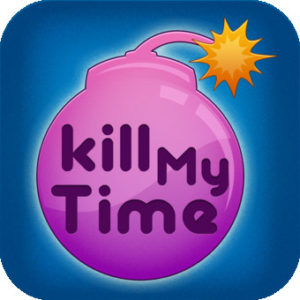
This iOS app came from a web app & a Facebook app of the same name and another web app called My GK Fun.
This product did not get purged and made it to the final 7 as it required almost zero maintenance as an iOS app. There were around 700 or so questions. The UI was good and engagement was high.
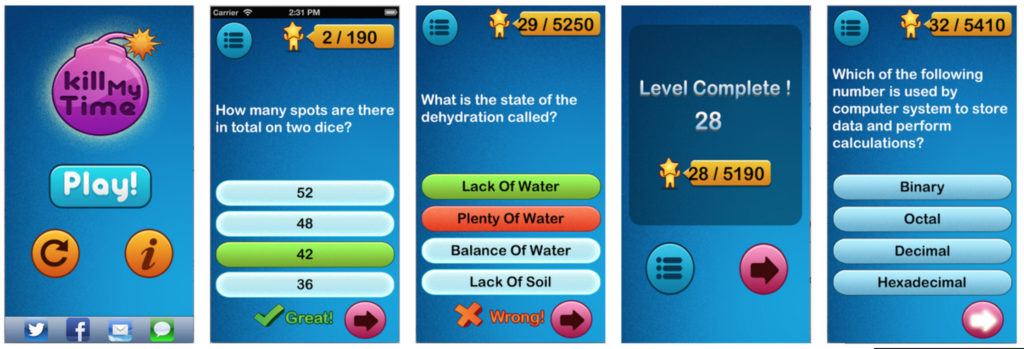
It was a paid app. So it just hung around in App Store and once in a while, someone would buy it. It was revenue earned from just one-time investment. Users did download it and we made some $ from it.
My Sketch Roo
Our ‘kids love sketching’ idea now lived in two forms: 1/ ContestFu.com and 2/My Sketch Roo iOS app.
My Sketch Roo had a very simple interface. When other sketching apps on iOS were trying to be super-sophisticated and feature-rich, we chose to be simple. We did not let sophistication or features come in-between kids and their sketches.
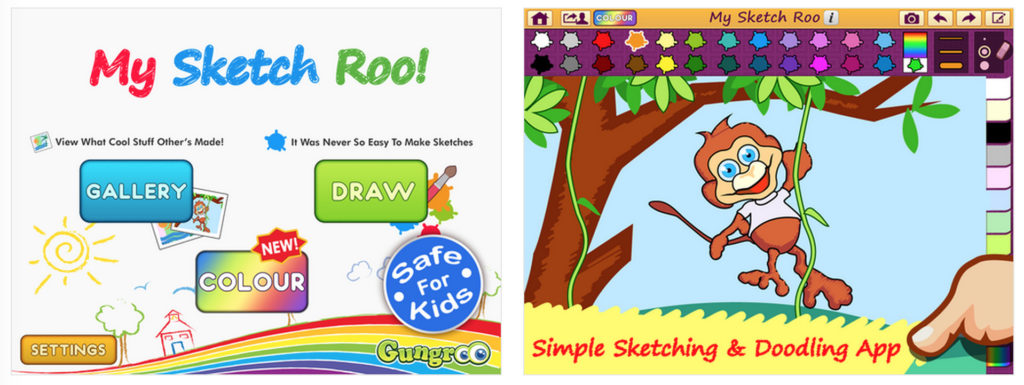
We took the app to next level by adding a colouring book. Kids could download these books and colour them. This was both fun and educational. Our English alphabet-based colouring books were very popular.
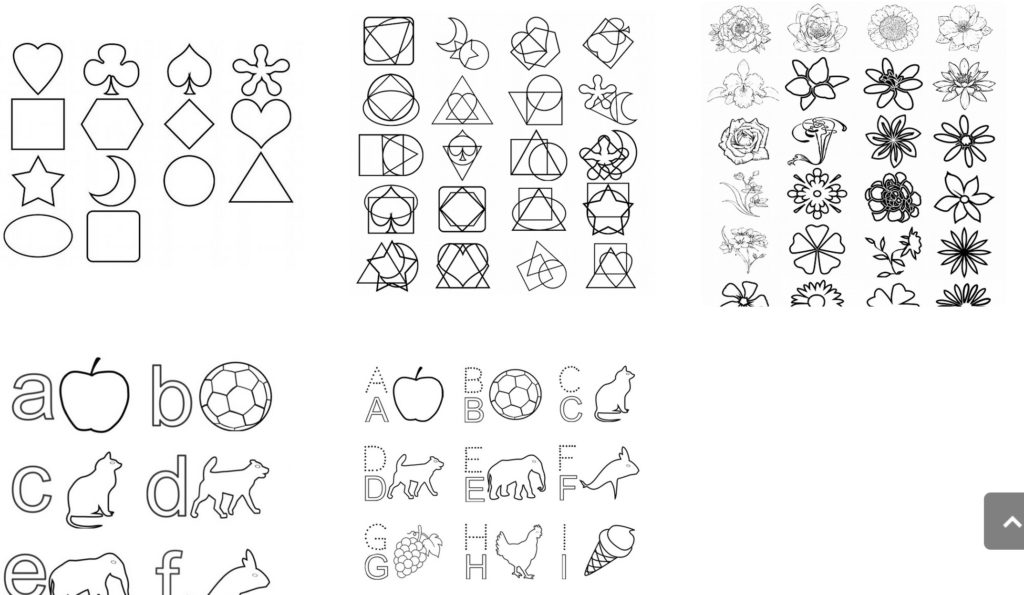
We see regular downloads and some of the colouring books are in-app purchases. However, this is just another app. Not something that will take us, as a startup, to another level. Though better positioned than ‘Kill My Time’ but still not something we could peg our future on.
Roo Kids
Roo Kids is a safe & fun instant messaging app for kids with minimum yet critical parental controls.
All through our experiments, our original idea that kids need a safe social alternative did not wither away. We kept thinking about it. Out of all the learning, came Roo Kids.
The thing with Facebook and GMail like products was that lots of data get retained on the server. That was a big safety risk. Whatapp was extremely popular. So we decided to give Instant Messaging a try. Once a message is delivered, it is removed from our servers.
VCs love X for Y analogies. So, we got described as ‘Whatsapp for Kids’ and at times ‘Whatsapp for Kids with Safety’.
We knew parents wanted kids to explore, learn and master the digital world. But, talking to them we realized there were 2 very critical concerns the parents had:
- Kids talking to strangers, and
- Kids getting distracted during homework time or sleep time.
We took on these two concerns head-on. The key features of Roo Kids that addressed these concerns were:
- Parents get to review and disapprove anyone on their kid’s Contact list. Thus no stranger or unwanted person could sneak in,
- Kids can block any user or message with immediate effect, and
- Parents can set curfew time slots during which the live chat will not work.
The app was targeted toward kids ages 6-12 years and to be used under parental supervision. We build iPhone, iPad and Android versions.
We believe that it is good for kids to experience a restricted app such as Roo Kids before moving into social networking sites, which provide less safety.
Finally, we had a product-market fit that we wanted to keep working on and could bet our future on!
War of Fascinating Galaxies
If a kid knows about Princess Apsa, Prince Kowal, the Sombrero Galaxy or the Hoag’s Object, they have definitely played with the WarOFGa Trading cards.
We started with 2 sets of 19 cards each for $1.00 (INR 50). One had a pink back and one a blue back. One of those ‘for boys’ and ‘for girls’ things. The content was all same and just the colour was different. Interestingly, the pink sets sold more across genders.
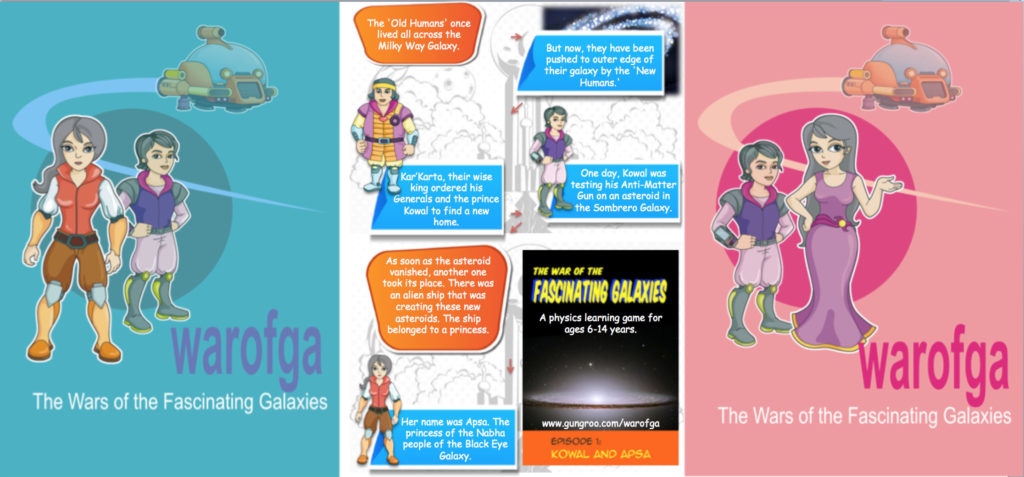
We then sold packs of 32 cards for $1.50 (INR 75). These continued to sell very well at city fairs and other places. It was a wonderful time!
But like before, we just could not get them to sell online. We did not want to develop distribution channels like other offline products either. This meant a whole different kind of org than what we wanted to be.
So in 2014 we did well with most of our 7 products and were making small revenues from them. We also learnt a bunch of new lessons in 2014. Turned out we were still stretched thin. It was time to rethink what we should focus on. Maybe another purge?
(cont..)





